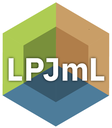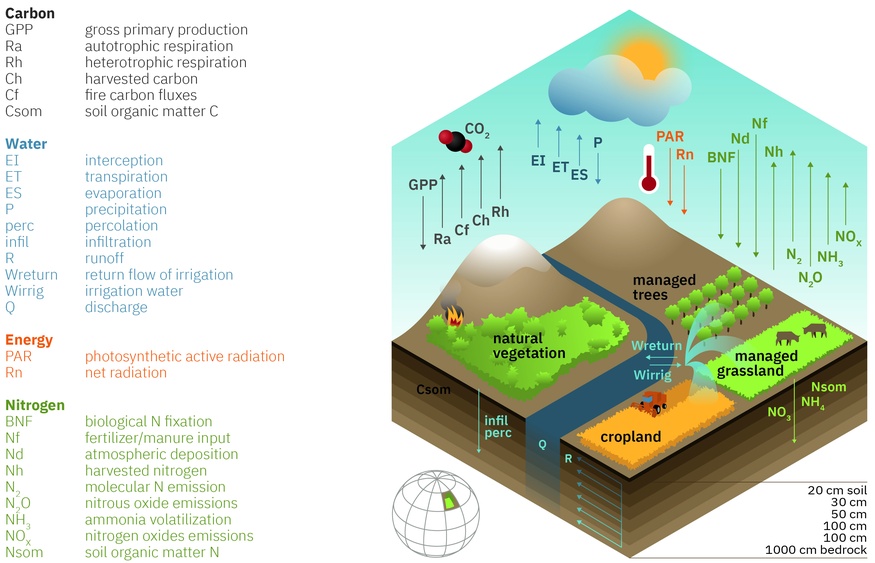
The LPJmL model has been developed from LPJ, a Dynamic Global Vegetation Model (DGVM), which was designed to simulate the global terrestrial carbon cycle and the response of carbon and vegetation patterns under climate change. As carbon and water cycles are intimately linked, it was quickly extended to also simulate the terrestrial water cycle (see model history ).

To study the role of the biosphere in the Anthropocene, it is crucial to represent both natural and agricultural ecosystems in a single, internally consistent modelling framework.
The model LPJmL ("Lund-Potsdam-Jena managed Land") is designed to simulate vegetation composition and distribution as well as stocks and land-atmosphere exchange flows of carbon and water, for both natural and agricultural ecosystems. Using a combination of plant physiological relations, generalized empirically established functions and plant trait parameters, it simulates processes such as photosynthesis, plant growth, maintenance and regeneration losses, fire disturbance, soil moisture, runoff, evapotranspiration, irrigation and vegetation structure.
LPJmL is currently the only DGVM that has dynamic land use fully incorporated at the global scale and also simulates the production of woody and herbaceous short-rotation bioenergy plantations and the terrestrial hydrology. It differs from other models in the wider field by computing carbon, nitrogen and water flows explicitly: most other macro-hydrological models lack the important vegetation structural and physiological responses that influence the water cycle, while most other vegetation models lack the advanced consistent water balance of LPJmL, or are not global in scale.
The monthly and daily input data are spatially explicit time series (typically ~67,000 global 0.5x0.5° grid cells) of climate, human land use, soil properties, and river flow directions. Grid cells may contain mosaics of one or several types of natural or agricultural vegetation. Outputs are generated as daily, monthly or annual spatially explicit time series for individual plants, carbon and water pools and fluxes, individual land-use types or the entire mosaic present in each grid cell.
LPJmL is a model jointly developed and maintained by RD1 (working groups ecosystems in transition led by Kirsten Thonicke and terrestrial safe operating space led by Dieter Gerten) and RD2 (working group land biosphere dynamics led by Christoph Müller) at PIK, linked to the MAgPIE model and integral part of the POEM and PIAM frameworks. It is also incorporated in the IMAGE model.
Publications
Please find key publications and all publications and some citation statistics as well as the GMD special issue on LPJmL.
Open source
The source code of the model is available under the AGPLv3 license at https://github.com/PIK-LPJmL/LPJmL
Please also visit our LPJmL zenodo.org community for published code and data.





